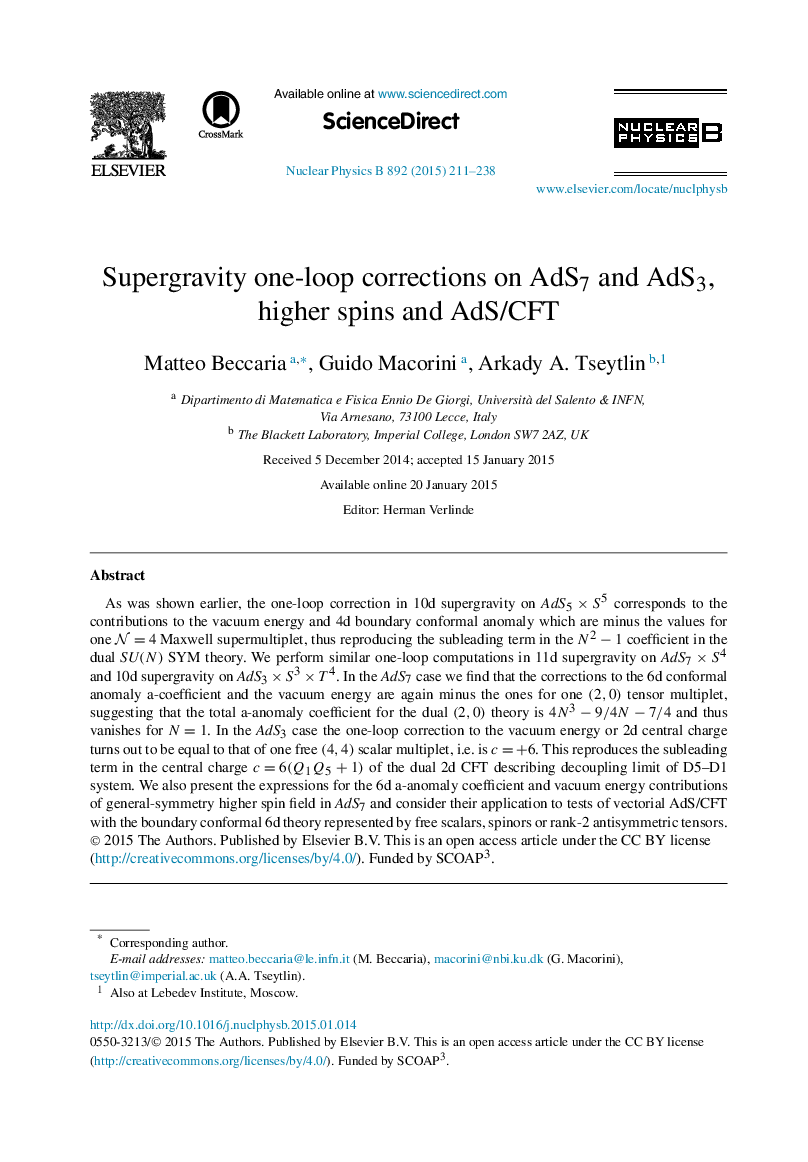| کد مقاله | کد نشریه | سال انتشار | مقاله انگلیسی | نسخه تمام متن |
|---|---|---|---|---|
| 1840504 | 1527731 | 2015 | 28 صفحه PDF | دانلود رایگان |

As was shown earlier, the one-loop correction in 10d supergravity on AdS5×S5AdS5×S5 corresponds to the contributions to the vacuum energy and 4d boundary conformal anomaly which are minus the values for one N=4N=4 Maxwell supermultiplet, thus reproducing the subleading term in the N2−1N2−1 coefficient in the dual SU(N)SU(N) SYM theory. We perform similar one-loop computations in 11d supergravity on AdS7×S4AdS7×S4 and 10d supergravity on AdS3×S3×T4AdS3×S3×T4. In the AdS7AdS7 case we find that the corrections to the 6d conformal anomaly a-coefficient and the vacuum energy are again minus the ones for one (2,0)(2,0) tensor multiplet, suggesting that the total a-anomaly coefficient for the dual (2,0)(2,0) theory is 4N3−9/4N−7/44N3−9/4N−7/4 and thus vanishes for N=1N=1. In the AdS3AdS3 case the one-loop correction to the vacuum energy or 2d central charge turns out to be equal to that of one free (4,4)(4,4) scalar multiplet, i.e. is c=+6c=+6. This reproduces the subleading term in the central charge c=6(Q1Q5+1)c=6(Q1Q5+1) of the dual 2d CFT describing decoupling limit of D5–D1 system. We also present the expressions for the 6d a-anomaly coefficient and vacuum energy contributions of general-symmetry higher spin field in AdS7AdS7 and consider their application to tests of vectorial AdS/CFT with the boundary conformal 6d theory represented by free scalars, spinors or rank-2 antisymmetric tensors.
Journal: Nuclear Physics B - Volume 892, March 2015, Pages 211–238